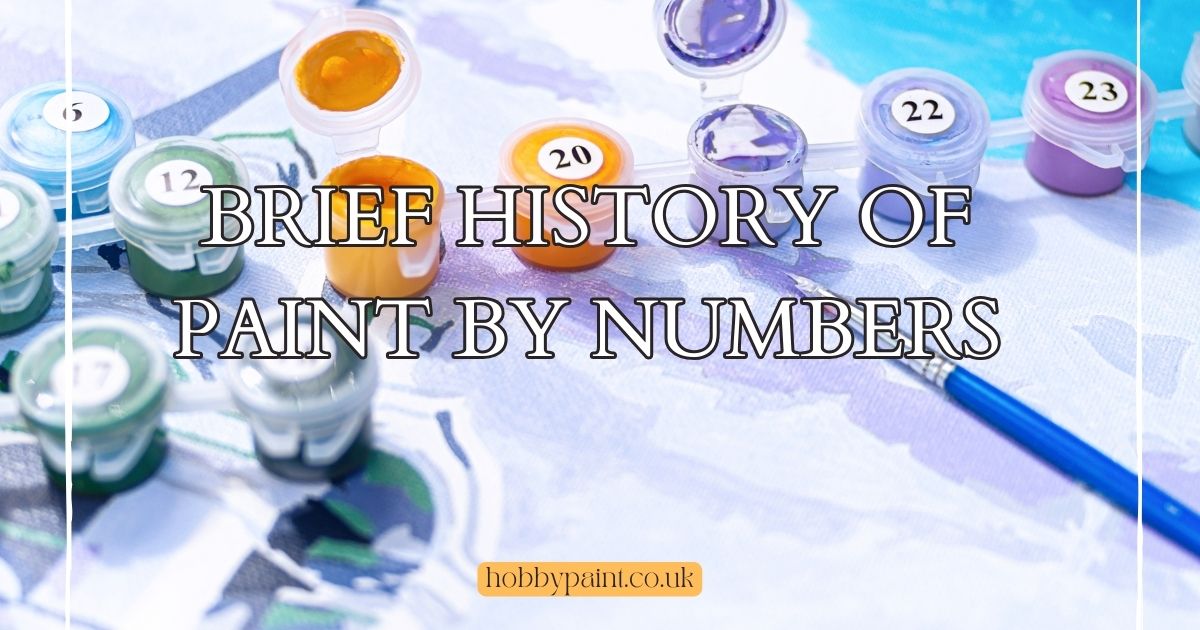
Painting by numbers, a popular artistic pastime, has a fascinating history that dates back to the mid-20th century. This innovative approach to painting allowed individuals, regardless of their artistic skill, to create beautiful works of art by following a numbered color scheme. The origins of painting by numbers can be traced back to its invention, the evolution of its popularity, and its impact on the world of art and leisure.
Invention and Early Years:
The concept of painting by numbers was born in the mind of Dan Robbins, an American commercial artist, in the early 1950s. Robbins envisioned a system that would simplify the process of painting for hobbyists. Collaborating with Max Klein, the owner of the Palmer Paint Company, they developed the first commercially available painting by numbers kits.
The initial kits featured simple landscapes and animal scenes, each with a corresponding set of numbered paints. The idea was to match the numbers on the canvas with the corresponding paint pots, allowing individuals to fill in the sections with the appropriate colors. This method aimed to democratize art, making it accessible to a wider audience beyond the traditional art community.
The Rise of Popularity:
The 1950s marked the golden era for painting by numbers. The kits became a cultural phenomenon, capturing the imagination of people across different age groups. The allure of creating a masterpiece without the need for formal art training appealed to both children and adults.
Kits expanded to include a variety of subjects, from scenic landscapes to famous artworks and even portraits. The inclusion of renowned paintings in the form of paint-by-number kits allowed enthusiasts to replicate iconic works by artists like Leonardo da Vinci and Vincent van Gogh. This brought a new dimension to the hobby, allowing individuals to experience a sense of connection with art history.
Cultural Impact and Criticisms:
While painting by numbers gained immense popularity, it also faced criticism from some quarters. Traditional artists and art critics often dismissed it as a simplistic and mechanical approach to creativity. They argued that true artistic expression should come from within, free from the constraints of numbered guidelines.
Despite these criticisms, painting by numbers continued to flourish. The activity became a symbol of leisure and a means of relaxation. The kits provided a therapeutic outlet for individuals seeking a break from the stresses of daily life. The act of filling in colors and watching a painting come to life offered a sense of accomplishment and joy.
Evolution and Adaptation:
As the years progressed, painting by numbers evolved to meet changing tastes and preferences. The kits began to feature more intricate designs, offering a greater challenge to enthusiasts. Artists experimented with different styles, introducing abstract and contemporary themes into the paint-by-number repertoire.
The advent of technology also played a role in the evolution of painting by numbers. Digital versions of paint-by-number apps emerged, allowing individuals to create art on their electronic devices. This adaptation brought the timeless activity into the modern age, making it accessible to a new generation of art enthusiasts.
Enduring Legacy:
Despite fluctuations in popularity over the years, painting by numbers has maintained a steady presence in the realm of recreational art. The kits have become nostalgic artifacts, evoking memories of childhood creativity and shared moments with family and friends. Additionally, the enduring appeal of painting by numbers has inspired contemporary artists to explore its concepts in the context of fine art.
In recent years, there has been a resurgence of interest in vintage paint-by-number paintings as collectors recognize their historical and cultural significance. Museums and galleries have hosted exhibitions celebrating the art form, acknowledging its impact on democratizing creativity and fostering a connection between people and art.
Conclusion:
The history of painting by numbers is a colorful journey that spans decades and transcends generational boundaries. From its humble beginnings as a commercial venture to its status as a beloved pastime, painting by numbers has left an indelible mark on the world of art and leisure. Its enduring legacy serves as a testament to the human desire for creative expression and the universal appeal of making art accessible to all.





